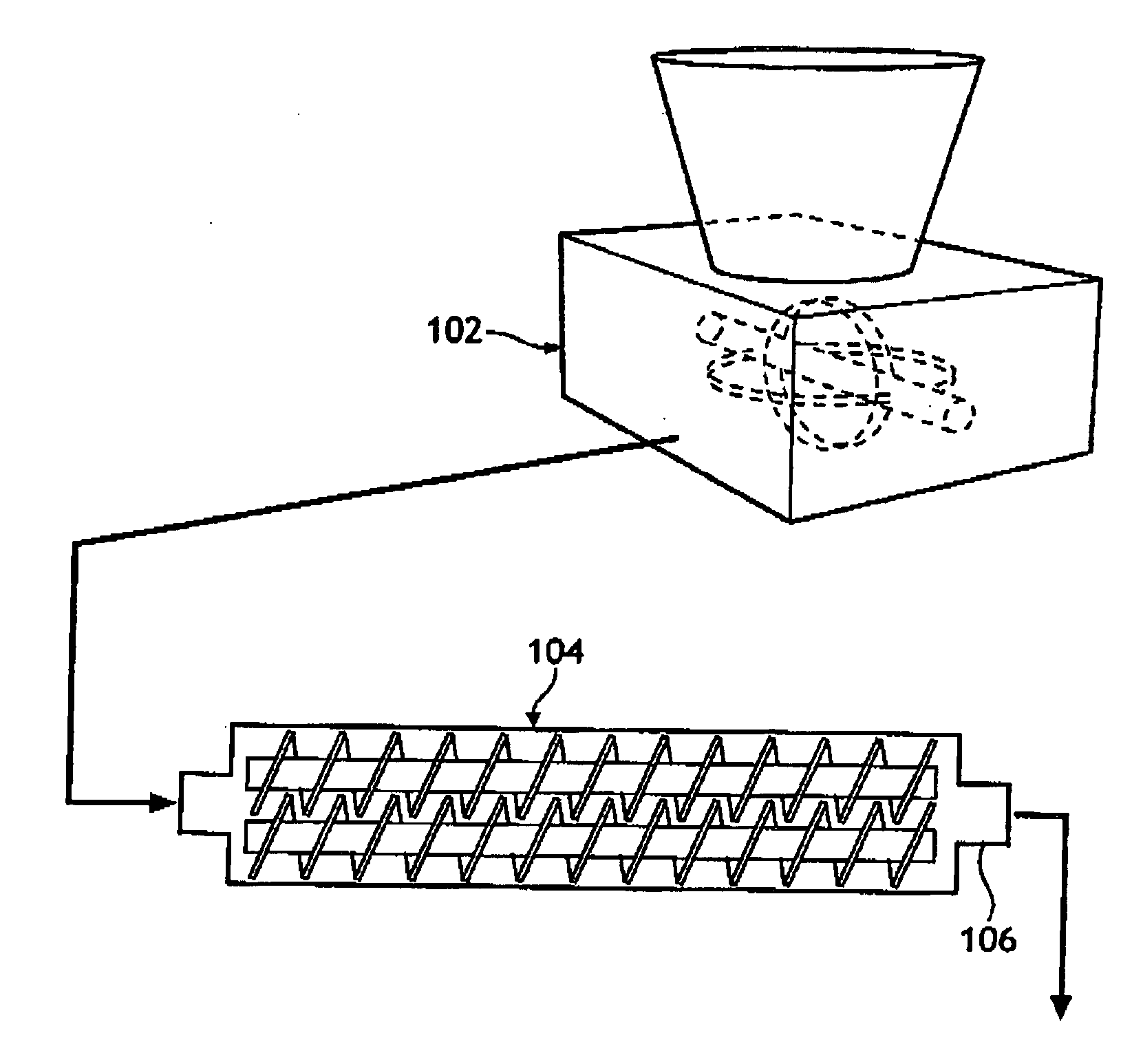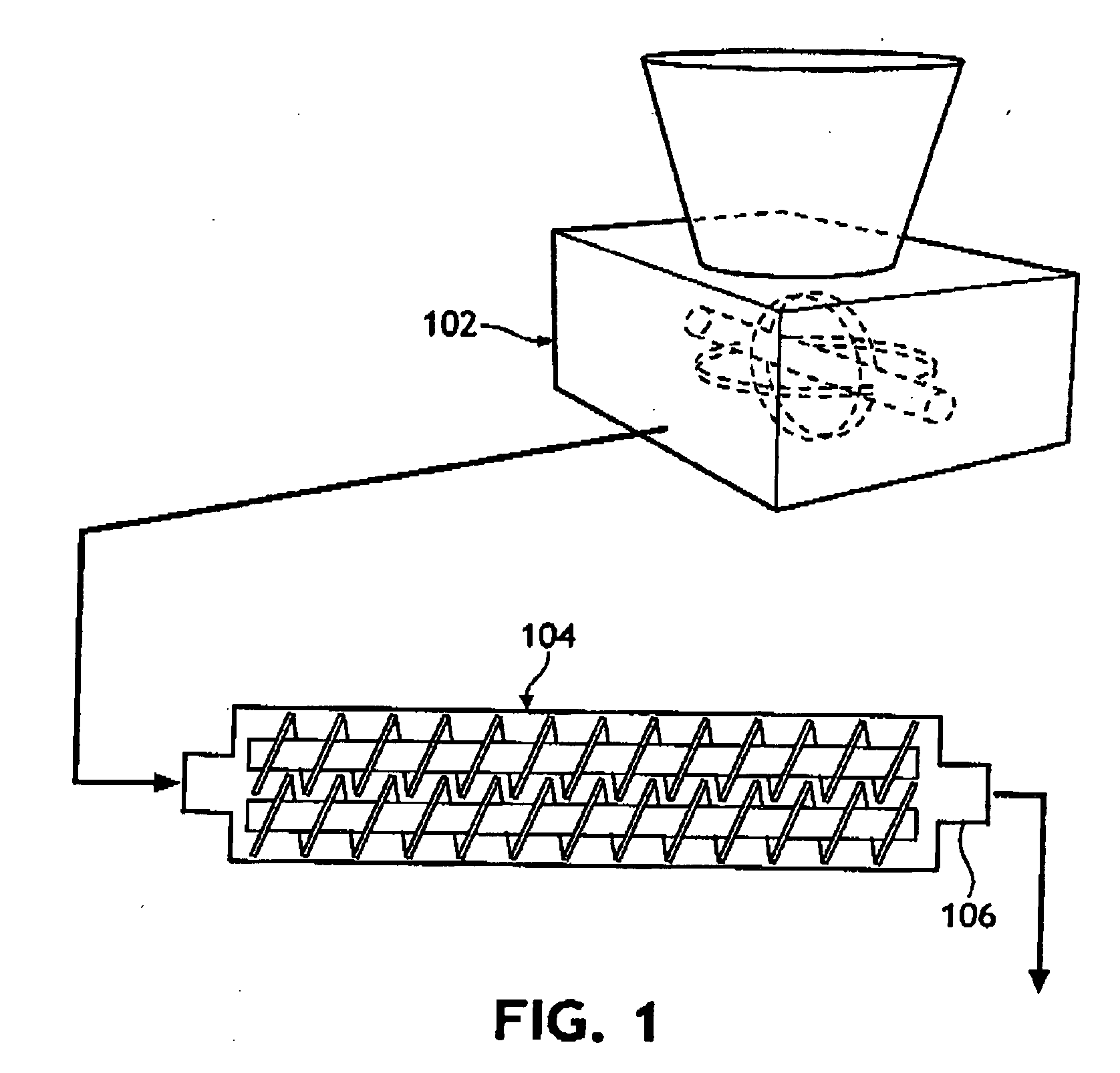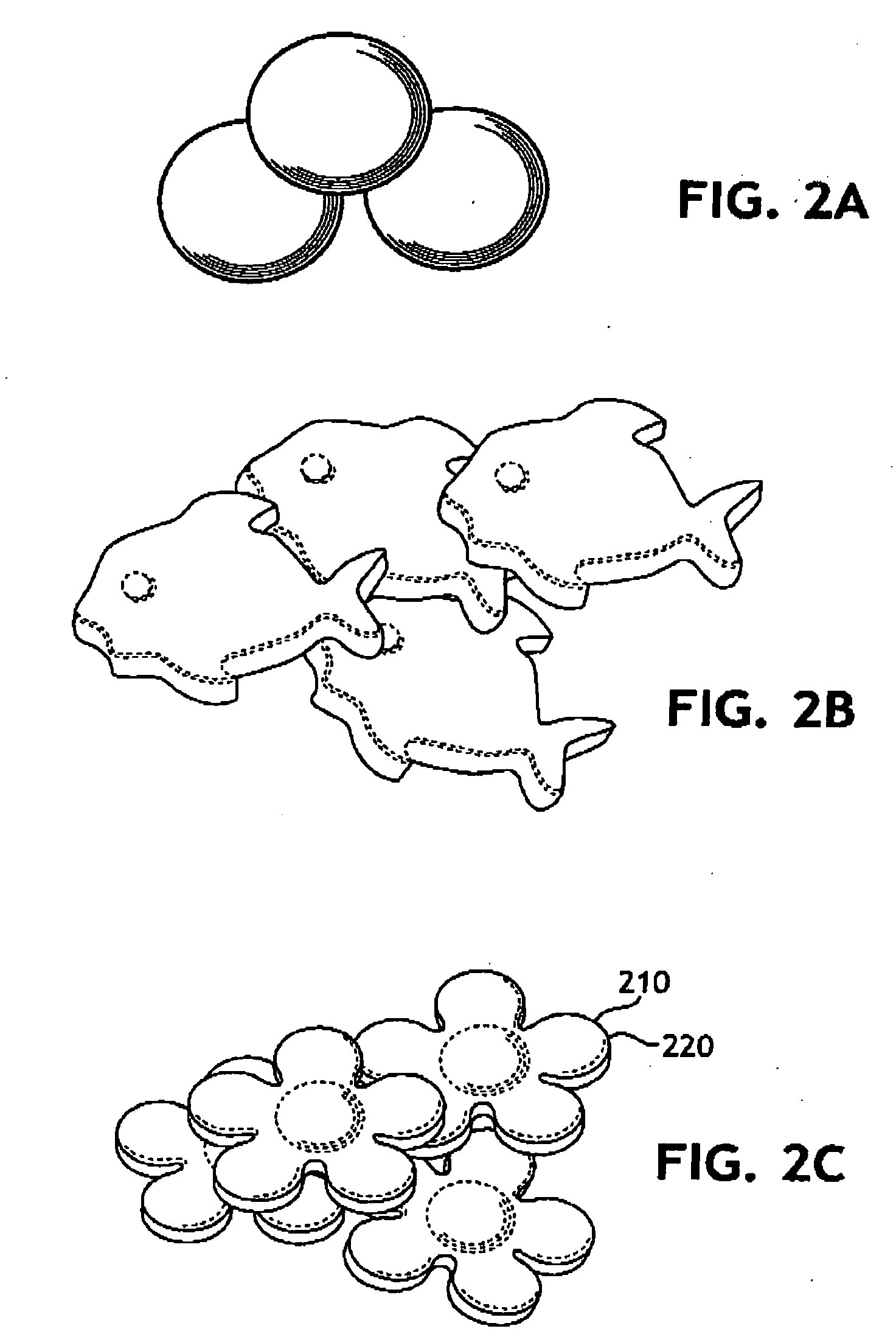Health-and-hygiene appliance comprising a dispersible component and a releasable component disposed adjacent or proximate to said dispersible component; and processes for making said appliance
a technology of dispersible components and releasable components, applied in the field of health and hygiene appliances, can solve the problems of difficulty in handling cleansers, ineffective removal of dirt, grime and/or disease-causing agents, and high cost of cleaning agents
- Summary
- Abstract
- Description
- Claims
- Application Information
AI Technical Summary
Benefits of technology
Problems solved by technology
Method used
Image
Examples
example 1
[0112] The dispersible component, ten ECO-FOAM-brand loose-fill packing puffs (i.e., water-soluble, degradable, extruded corn-starch puffs made by National Starch and Chemical Company) were weighed and then misted with water as a group using an Oil-O-Pump mister (available from Gemco as product number 7925). These puffs were cylindrically shaped, having a length of about 1.5 inches, a diameter of about 0.5 inches, and a calculated volume of about 0.3 cubic inches. The resulting ECO-FOAM puffs, having water-dampened surfaces—with the water beginning to interact with the chemical constituents of the puffs themselves—were sticky and therefore capable of adhering to a soap coating. The dry weight of the puffs was 1.38 g; the misted weight was 1.45 g.
[0113] The ten water-misted ECO-FOAM puffs were then placed in a one-gallon Ziplock bag that contained about 2.5 g of a mixture of surfactants and colorant (i.e., the cleaning formulation or cleaning formulation). This particular cleaning f...
example 2
[0116] The same materials and processing steps used in Example 1 were used in this example except that each ECO-FOAM packing puff was individually misted with water and individually coated with the cleaning formulation. The average dry weight of each puff before misting was 0.12 g; the average weight of each puff after misting with water was 0.17 g; and the average weight of the misted puffs after application of the cleaning formulation (i.e., the coated weight) was 0.37 g. A more uniform coating was obtained, with the resulting coating of cleaning formulation on each ECO-FOAM puff averaging about 0.20 g. The releasable component was 68% of the total weight in the moistened state and 54% based on the total dry weight.
example 3
[0117] ECO-FOAM packing puffs (dispersible component) were coated in canola oil with a variety of methods. Canola oil was used since it did not dissolve the ECO-FOAM puffs. Individual, canola-oil-treated, ECO-FOAM puffs were then placed in a Styrofoam cup containing an excess of the cleaning formulation (releasable component) of Example 1. A lid was placed over the cup and the contents shaken to coat the ECO-FOAM puff. The appliance was then removed and the process repeated. The table below shows the results of various coating methods.
Foam + Oil + Cleaning% CleaningFoam + OilFormulation% CoatingFormulationMethodFoam (g)(g)(g)wt to total wt.wt to total wt.Dip & Coat10.142.663.3793%21%Dip & Coat10.121.011.2791%20%Dip, Blot off &0.130.941.1989%21%Coat2Blot on & Coat30.120.230.3263%28%
1The foam puff was immersed in the canola oil, drained, and then coated with the cleaning formulation. Draining time varied in the two examples.
2The foam puff was immersed in the canola oil, drained, ex...
PUM
 Login to View More
Login to View More Abstract
Description
Claims
Application Information
 Login to View More
Login to View More - R&D
- Intellectual Property
- Life Sciences
- Materials
- Tech Scout
- Unparalleled Data Quality
- Higher Quality Content
- 60% Fewer Hallucinations
Browse by: Latest US Patents, China's latest patents, Technical Efficacy Thesaurus, Application Domain, Technology Topic, Popular Technical Reports.
© 2025 PatSnap. All rights reserved.Legal|Privacy policy|Modern Slavery Act Transparency Statement|Sitemap|About US| Contact US: help@patsnap.com



